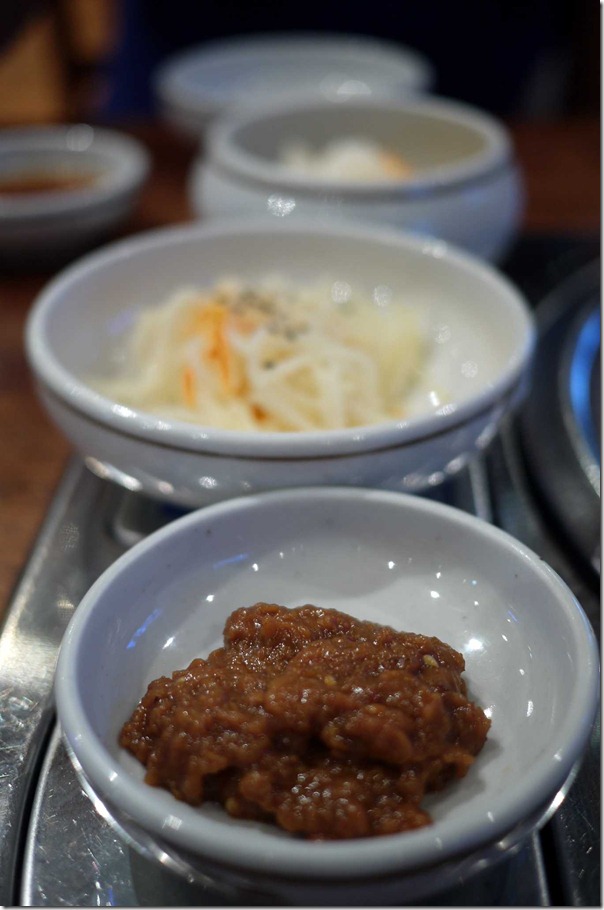


Ganjajang (간자장) is very similar to regular Jajangmyeon, but instead of a watery sauce, the sauce is quite “dry”. These days you can also buy instant Jajangmyeon in supermarkets and convenience stores. Some use different ingredients in the sauce, whereas others switch out the noodles for rice or rice cakes. Over time, many different types of Jajangmyeon developed. You can add some extra toppings to the dish, such as: The thick wheat noodles are placed in a large bowl and topped with a rich portion of the Jajang sauce. Vegetables such as onions, zucchini, or cabbage.The Chunjang paste is fried, after which the other ingredients are added. In Chinese restaurants, Chunjang is often served as a side dish in which you can dip raw onions. Approximately 19 parts of flour versus 1 part of soybean is used to make the sauce. Although it is colloquially known as sweet black soybean paste, the sauce is primarily made from fermented wheat flour. Chunjang is also known as Tianmian sauce and is a thick, smooth black paste made from beans and wheat. To make the characteristic black sauce, you need Chunjang. They are made from wheat flour, salt, baking soda, and water. These are often quite thick, semi-chewy, and hand-made or machine-pulled. There are special noodles to make Jajangmyeon. In addition, while the development of the Korean food service market began in 1980, Chinese restaurants that were closely located in the local community started delivering to the local community, founded Korea’s delivery culture and the early days of the food service market. These days, Jajangmyeon is so cheap and so widely available, that it is said that over 7 million bowls are sold per day in South Korea. For a long time, Jajangmyeon was seen as a special dish and was only eaten on special celebration days, such as graduation, birthdays, or Children’s day. Wheat became cheaply available and the inexpensive dish was very popular among merchants and dock workers. In the 1950s, after the Korean War, Jajangmyeon ramen started to gain popularity all over the country.

Nowadays, Gonghwachun is the Jajangmyeon Museum. Later, caramel was added to make the dish sweeter to better suit Korean palettes. This dish originated from the Shandong region, a province in East China. It was based on the Chinese dish Zhajiangmian, which literally means fried sauce noodles. Rumor has it that in 1905, a Chinese restaurant called Gonghwachun started serving Jajangmyeon. They mostly settled in the same neighborhood, which has today become popular as Incheon Chinatown, famous for its many Chinese restaurants and shops. History of JajangmyeonĪround the end of the 19th century, Chinese immigrants started to settle in what is now Incheon, the port city to the west of Seoul. People wear black clothing and eat black foods, such as Jajangmyeon. After February 14th, Valentine’s Day, and March 14th, White Day, Black Day celebrates all singles. The 14th of every month is a special day for Koreans to celebrate. It is also a special dish on April 14th, also known as Black Day. As it is quite cheap, it is often eaten by students or workers. Most Korean Chinese restaurants use this spelling. As the pronunciation of zhá sounds more like the Korean Jja, many Koreans call Jajangmyeon, Jjajang noodles or Jjajangmyeon. The name is derived from the Chinese zhájiàng (炸酱), which means “fried sauce”, and myeon, which means noodles. Jajangmyeon is colloquially known as Jjajangmyeon (짜장면). Jjajangmyeon is often served with yellow pickled radishes, 단무지, to cut the greasiness. The sauce is based on Chunjang (춘장), a salty black soybean paste that originated in Northeast China, and is stir-fried with onions and minced pork or beef. It contains thick, wheat noodles that are served with a thick, semi-sweet black sauce. Jajangmyeon, or 자장면 or 짜장면 in Korean, was first served in Korea in the early 20th century by Chinese immigrants and has since been adapted to the Korean cooking style.


 0 kommentar(er)
0 kommentar(er)
